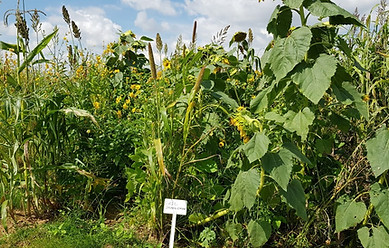COVER CROP MIXTURES

BENEFITS OF COVER CROPS - ADDING VALUE
Why grow cover crops? The answer is simple: Although the cover crop does not produce a marketable product, its benefits for the succeeding crops are a good return on investment. So in short, cover crops increase farm profitability.
ABOUT
Cover crops have been used to improve soil and the yield of subsequent crops since antiquity. Chinese manuscripts indicate that the use of green manures is probably more than 3,000 years old. Green manures were also commonly used in ancient Greece and Rome. Today, there is a renewed interest in cover crops, and they are becoming important parts of many farmers· cropping systems.
THREE DIFFERENT TERMS are used to describe crops grown specifically to help maintain soil fertility and productivity instead of for harvesting: green manures, cover crops, and catch crops. The terms are sometimes used interchangeably and are best thought of from the grower's perspective.
A GREEN MANURE CROP is usually grown to help maintain soil organic matter and increase nitrogen availability.
A COVER CROP is grown mainly to prevent soil erosion by covering the ground with living vegetation and living roots that hold on to the soil. This, of course, is related to managing soil organic matter, because the topsoil lost during erosion contains the most organic matter of any soil layer.
A CATCH CROP is grown to retrieve available nutrients still in the soil following an economic crop and prevents nutrient leaching over the winter.
Sometimes which term to use is confusing. We usually have more than one goal when we plant these crops during or after our main crop, and plants grown for one of these purposes may also accomplish the other two goals. The question of which term to use is not really important, so in our discussion below, the term cover crop will be used.
Cover crops are usually killed on the surface or incorporated into the soil before they mature. (This is the origin of the term green manure.] Since annual cover crop residues are usually low in lignin content and high in nitrogen, they decompose rapidly in the soil.
BENEFITS
Cover crops provide multiple potential benefits to soil health and the following crops, while also helping maintain cleaner surface and groundwater (figure 10.1). They prevent erosion, improve soil physical and biological properties, supply nutrients to the following crop, suppress weeds, improve soil water availability, and break pest cycles. Some cover crops are able to break into compacted soil layers, making it easier for the following crop's roots to more fully develop. The actual benefits from a cover crop depend on the species and productivity of the crop you grow and how long it's left to grow before the soil is prepared for the next crop.



